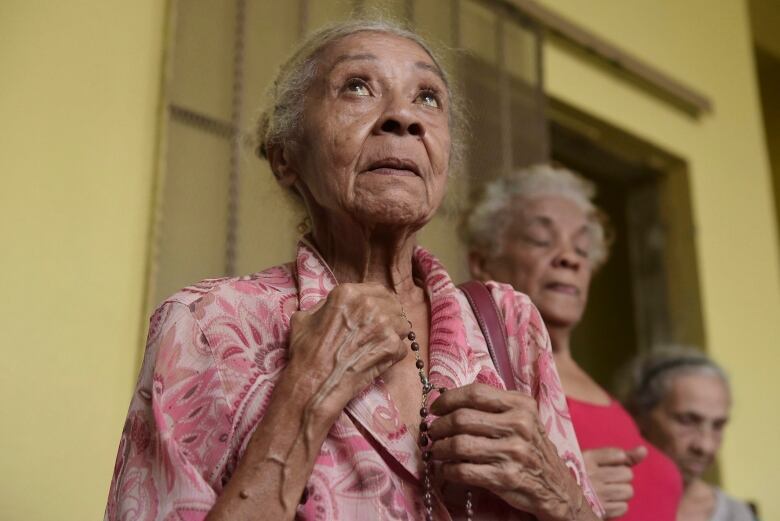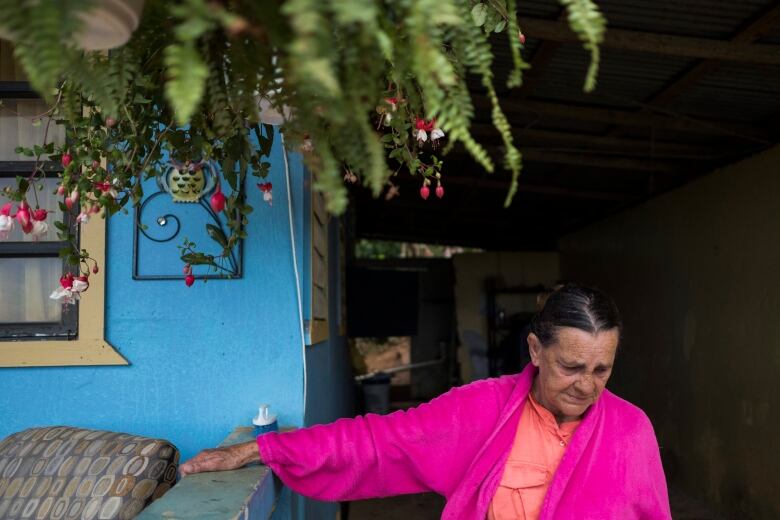Nearly 3,000 deaths in Puerto Rico now blamed on Hurricane Maria
Governor raises official toll, from just 64, to match new study on storm's aftermath

Puerto Rico's governor raised the island's official death toll from Hurricane Maria from 64 to 2,975 on Tuesday after an independent study found that the number of people who succumbed in the desperate, sweltering months after the storm had been severely undercounted.
The new estimate of nearly 3,000 dead in the six months after Maria devastated the island in September 2017 and knocked out the entire electrical grid was made by researchers with the Milken Institute School of Public Health at George Washington University.
"We never anticipated a scenario of zero communication, zero energy, zero highway access," Gov. Ricardo Rossello told reporters. "I think the lesson is to anticipate the worst."
He said he is creating a commission to study the hurricane response, and a registry of people vulnerable to the next hurricane, such as the elderly, the bedridden and kidney dialysis patients.
The new figure is almost twice the U.S. government's previous estimate, included in a recent report to Congress, that said there were 1,427 more deaths in the three months after the storm than the average for the same period over the previous four years.
Researchers said the official count was solow in part because doctors were not trained in how to certify deaths after a disaster.
The number of dead has political implications for the Trump administration, which was accused of responding half-heartedly to the disaster. Shortly after the storm, when the official death toll stood at 16, U.S. President Donald Trump marvelled over the small loss of life compared to that of "a real catastrophe like Katrina."
Hurricane Katrina, which struck New Orleans in 2005, was directly responsible for about 1,200 deaths, according to the National Hurricane Centre (NHC). That does not include indirect deaths of the sort the researchers counted in Puerto Rico.
These numbers are only the latest to underscore that the federal response to the hurricanes was disastrously inadequate and, as a result, thousands of our fellow American citizens lost their lives.-Rep.NydiaVelazquez, Democrat from New York
The White House issued a statement on Tuesday noting that it sent 12,000 personnel to Puerto Rico for response and recovery efforts, and said it would continue to support the island's government and its communities in their recovery for years to come.
"The American people, including those grieving the loss of a loved one, deserve no less. The president remains proud of all of the work the federal family undertook to help our fellow citizens in Puerto Rico," it said.
Yet many remain outraged at both the local and federal governments.
Rep. Nydia Velazquez, a New York Democrat, said the report shows the U.S. government failed the people of Puerto Rico.
"These numbers are only the latest to underscore that the federal response to the hurricanes was disastrously inadequate and, as a result, thousands of our fellow American citizens lost their lives," she said in a statement.
There is no national standard on how to count disaster-related deaths. While the NHC reports only direct deaths, such as victims who are killed by flying debris or drown in the floodwaters, some local governments may include indirect deaths, from such things as heart attacks and house fires.
Long power outage
Researcherssaid they counted deaths over the span of six months a much longer period than usual because so many people were without power during that time.
"That caused a number of issues,"said Lynn Goldman, dean of the institute, adding that people were forced to exert themselves physically or were exposed to intense heat without fans or air conditioning. "It's fairly striking that you have so many households without electricity for so long. That's unusual in the U.S. after a disaster."

Puerto Rico's government released data in June showing increases in several illnesses in 2017 that could have been linked to the storm: Cases of sepsis, a serious bloodstream infection usually caused by bacteria, rose from 708 in 2016 to 835 last year.
Deaths from diabetes went from 3,151 to 3,250, and deaths from heart illnesses increased from 5,417 to 5,586.
Bethzaida Rosado said government and health-care officials were not prepared for the storm, and she is still angry her 76-year-old mother died because oxygen tanks were not available on the island after the hurricane.
"Do you know what it's like to see your mother run out of oxygen?" she said. "I don't wish that on anyone."
Hurricane Maria made landfallin Puerto Rio on Sept. 20, 2017. Two weeks earlier, Hurricane Irma had skirted the island, knocking out power to a million people but inflicting relatively less damage than Maria's direct hit.
Substantially undercounted
The Rossello administration stopped updating its official death toll of 64 months ago and ordered the independent investigation amid reports that the number was substantially undercounted.
The first phase of the study cost $305,000. In the second phase, the researchers plan to focus on the causes of death.
The researchers found that the risk of death was 45 per cent higher for those living in impoverished communities, and that men older than 65 saw a continuous elevated risk of death.
They also reported that physicians and others told them that Puerto Rico's government did not notify them about federal guidelines on how to document deaths related to a major disaster.

"Others expressed reluctance to relate deaths to hurricanes due to concern about the subjectivity of this determination and about liability," the report said.
Researchers said they took into account an eightper cent drop in Puerto Rico's population that occurred in the six months after the storm, when tens of thousands fled because of the damage. They also reviewed mortality data, including deaths by age, sex and municipality of residence, from July 2010 to February 2018.
However, they did not share details of the methodology, saying those will be released if the study is published in a scientific journal.
"We did not cherry-pick, I can promise you," Goldman said. "We used very rigourous methodology."
Emergency plans fell short
The study also found that government emergency plans in place when Maria hit were not designed for hurricanes greater than a Category 1. Maria was a Category 4 with 248 km/hwinds. Damage was estimated at more than $100 billion US.
In addition, neither the Department of Public Safety nor the governor's communications office had any written crisis and emergency communication plans in place, researchers said.
They made several recommendations, including that the government train doctors better on filling out death certificates and that it develop a policy for preparing for and responding to major emergencies.

The researchers also said the public health system needs to be strengthened, though Goldman said they don't know yet whether those weaknesses contributed to storm-related deaths.
She added that she worries whether Puerto Rico, which is trying to restructure a portion of its more than $70 billion public debt amid a 12-year recession, can adopt any of the recommendations.
"I don't think they have the resources," she said. "That is a very critical issue."












_(720p).jpg)


 OFFICIAL HD MUSIC VIDEO.jpg)
.jpg)



























































































